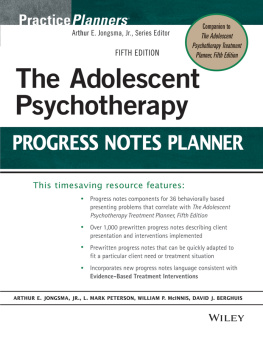THE BLEEDING DISEASE
THE BLEEDING DISEASE
Hemophilia and
the Unintended Consequences
of Medical Progress
STEPHEN PEMBERTON
The Johns Hopkins University Press
Baltimore
2011 The Johns Hopkins University Press
All rights reserved. Published 2011
Printed in the United States of America on acid-free paper
9 8 7 6 5 4 3 2 1
The Johns Hopkins University Press
2715 North Charles Street
Baltimore, Maryland 21218-4363
www.press.jhu.edu
Library of Congress Cataloging-in-Publication Data
Pemberton, Stephen Gregory.
The bleeding disease : hemophilia and the unintended consequences of medical progress / Stephen Pemberton.
p. ; cm.
Includes bibliographical references and index.
ISBN-13: 978-1-4214-0115-7 (hardcover : alk. paper)
ISBN-10: 1-4214-0115-0 (hardcover : alk. paper)
1. HemophiliaUnited StatesHistory. I. Title.
[DNLM: 1. Hemophilia AhistoryUnited States. 2. Hemophilia AtherapyUnited States. 3. Blood TransfusionUnited States. 4. HIV InfectionstransmissionUnited States. 5. History, 20th CenturyUnited States. 6. Liver TransplantationtrendsUnited States. WH 11 AA1]
RC642.P46 2011
616.1572dc22 2010049749
A catalog record for this book is available from the British Library.
Special discounts are available for bulk purchases of this book. For more information, please contact Special Sales at 410-516-6936 or specialsales@press.jhu.edu.
The Johns Hopkins University Press uses environmentally friendly book materials, including recycled text paper that is composed of at least 30 percent post-consumer waste, whenever possible. All of our book papers are acid-free, and our jackets and covers are printed on paper with recycled content.
This book is dedicated to the memory of
Dr. Kenneth Brinkhous (19082000)
and the many other pioneers of hemophilia management
whose stories, for better or worse, are reflected here.
It is not a book that Dr. Brinkhous would have envisioned me writing,
although I wish I could share it with him, to show him how
I put my time inside and outside his laboratory to use.
One repays a teacher badly if one always remains nothing but a pupil.
NIETZSCHE, ON THE GIFT-GIVING VIRTUE,
IN THUS SPOKE ZARATHUSTRA
CONTENTS
PREFACE
For more than six decades, the hereditary bleeding disorder known as hemophilia has spurred parents and doctors to engage in a concerted effort to normalize the experience of patients: to liberate them from the imminent threat of death, to alleviate their pain and debility, and to integrate them fully into society. Crucially, blood transfusions helped physicians render bleeding manageable for patients and families in the middle decades of the twentieth century. Beginning in the 1970s, many Americans with hemophilia could say that their lives were relatively normal and be viewed as normal by others. Yet, the glory of this achievement was shortlived. The therapeutic revolution that delivered this semblance of normalcy soon brought unexpected results in the 1980s: HIV/AIDS, hepatitis C, and the notorious irony of hemophilia patients contracting virulent diseases borne by the biomedical treatments that they believed had liberated them. In the late twentieth century, the history of hemophilia became a narrative of technological promise and unfolding peril.
While the media have widely publicized stories indicating that many hemophilia patients contracted HIV (human immunodeficiency virus) during the 1980s, the publicin many waysstill does not appreciate the depth of this tragedy. In the United States, among the more than ten thousand patients whom clinicians categorized as severe hemophiliacs, nearly nine out of ten acquired an HIV infection from the concentrated blood products they infused to control their bleeding disorder. What should we now make of this event? How are we to understand the fact that those hemophilia patients whose conditions were most heavily and expertly managed later proved to be at the highest risk of post-transfusion infections? What does it say about modern medicine and society that our most advanced, technology-intensive efforts to manage disease and promote health actually facilitated the oppositegreater debility and premature death? These questions, as well as the multiple contexts that give rise to them, are the subject of The Bleeding Disease.
This history focuses on efforts to manage hemophilia in the United States with the goal of identifying what has been exemplary as well as worrisome about this enterprise. Readers should also know that my decision to write this particular work of history was borne out of circumstances I confronted during the 1990s. I first became interested in hemophilia in the fall of 1993 when Dr. Kenneth Brinkhous (19082000) introduced me to the problem. On meeting this vibrant hematologist on my arrival at the University of North Carolina, I could hardly have predicted the path on which it would put me. Then in his eighties, Brinkhous still ran a thriving blood research laboratory at the medical school, one that he had founded nearly five decades earlier.
For three formative years, I worked in the Brinkhous laboratory as an editorial and research assistant. My qualifications for the job were hardly obvious. I was not trained as a scientist, nor did I have a prior interest in medicine or health-related work. In fact, my advanced education at that point was mostly in philosophy. Yet Brinkhous seemed certain that I could play a productive role in his laboratory, and I appreciated the job and encouragement. I soon found myself helping him prepare scientific and historical talks that he was frequently invited to give, assisting him in the revisions of the laboratorys research papers, managing his archive and library, and facilitating his intellectual projects in various ways. Ostensibly, my reason for being in Chapel Hill was to get a graduate degree in history. I took the job with Brinkhous to help pay for my schooling as a historian, but soon found myself spending more time on the medical campus than I had planned. In 1994 I dropped my history classes completely and began working full time for this experimental hematologist. He had a way of making the activities in his laboratory seem all-encompassing.
Dr. Kenneth Brinkhous had a long and distinguished career as a medical scientist, and his many successes as an experimental hematologist paralleled hemophilias transformation from an intractable disease in the 1930s into the manageable condition it had become by the 1970s. Born and educated in Iowa, Brinkhous began research on blood clotting as a medical student at the University of Iowa. Upon receiving his M.D. in 1932, Brinkhous joined the pathology faculty at Iowa where he made the characterization and correction of bleeding disorders a focus. In 1946, after his World War II service in the Army Medical Corps, Brinkhous became chair of pathology at the University of North Carolina Medical School, where he immediately took up his hemophilia research to become one of the first hematologists to classify classical hemophilia as a deficiency of clotting factor VIII (then called antihemophilic factor, or AHF).
Brinkhouss greatest contributions as a hemophilia researcher came in his long tenure at the University of North Carolina where one of the tallest, most imposing buildings on the campus now bears his name. In the late 1950s and early 1960s, Brinkhous and his colleagues were developing methods to produce more potent blood concentrates (aka plasma fractions) to stop hemophilic bleeding. Their major breakthrough in this area came with their 1966 announcement of the first highly potent antihemophilic factor concentrate (factor VIII concentrate). Approved by the Food and Drug Administration in 1968, this concentrate could be stored at room temperature and administered in a few minutes in a physicians office or even by the patient at home. Brinkhous retired as UNCs chair of pathology in 1973 and devoted himself to unsalaried, full-time scientific research until his death in 2000.
Next page









